Ephesus Travel Guide 2023
Desired by many kings and emperors and ruled over centuries by Greek, Roman, Persian, Byzantine and Ottoman empires, Ephesus remained one of the world's largest and most impressive ancient cities.
Ephesus is located in western Turkey, near the modern-day town of Selçuk. It was once a bustling centre of trade and commerce and has been on the UNESCO World Heritage List since 1988. Ephesus is a must-see destination for tourists visiting Turkey. The ancient city is home to some of the most well-preserved ruins in the world and offers tourists a glimpse into what life was like in ancient times. Ephesus will leave you captivated by its monumental architecture. You can't help but admire the architecture and structure of the Ancient City Theatre, towering marble columns, the remains of Celsus Library, the Artemis Temple and more. In this article, we will mention everything you need to know about this ancient city, including its history, highlights, the best time to visit, and how to get there!
History of Ephesus
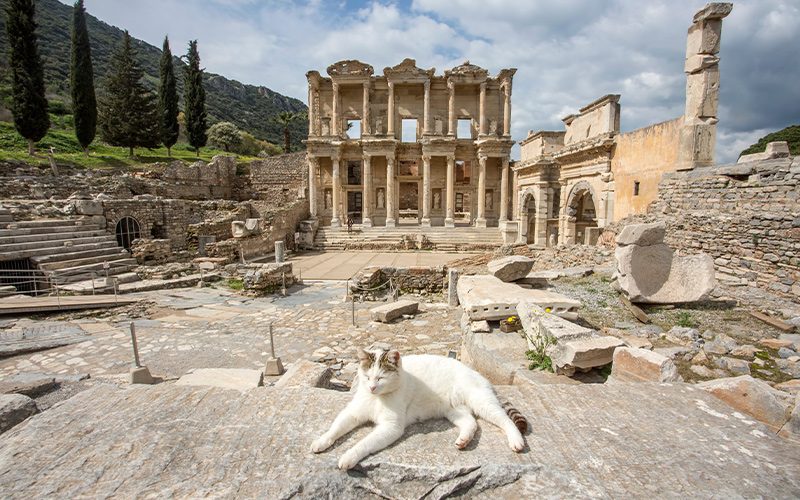
Ephesus' history is as old as human history. The city adorned the dreams of the kings and rulers who strived for wealth and prestige from the day it was founded due to its strategic location. The local people of Anatolia, known as Lelegians and Carians, first inhabited the city before the city was captured by Ionian tribes led by Androclous, the son of Athenian king Kodros, at around 1050 BC. After 500 years of Ionian rule, Ephesus was invaded by Lydian ruler Croesus in 560 BC. The Lydian rule ended after the Persian invasion in 546 BC. Then, Alexander the Great, defeating the Persian forces at the Battle of Granicus, captured the city in 334 BC. Followingly, Ephesus passed to Alexander's commander Lysimachus in 295 BC. Ephesus was also a major commercial centre having an international trade port located by the Aegean Sea. The port of Ephesus allowed connection with the West via sea routes of the Adriatic and with the East via Royal Road starting from Persia. Eastern merchants used the Port of Ephesus to export goods to Western countries such as Greece and Italy. The same applies to Western merchants trading goods with Eastern countries. Therefore, Ephesus was crucial in expanding Christianity in its early years. It is said that St Paul launched many of his missionary journeys from Ephesus. Ephesus was also the fourth largest city after Rome, Alexandria and Antioch during the Roman Empire. In 29 BC, Ephesus became the capital city of the Asia province of the Roman Empire. Today, the city's breathtaking shiny white marble streets and adjoining porticos and shops, a massive open-air theatre, the fascinating Library of Celsus, two agoras, huge bath complexes, governmental buildings, houses of the elite (Terrace Houses) adorned with delicate mosaics and frescoes, marble statues, fountain remainings and many other historical Roman remainings are attracting curious travellers from all over the world.
Top Attractions to See in Ephesus
1. Library of Celsus
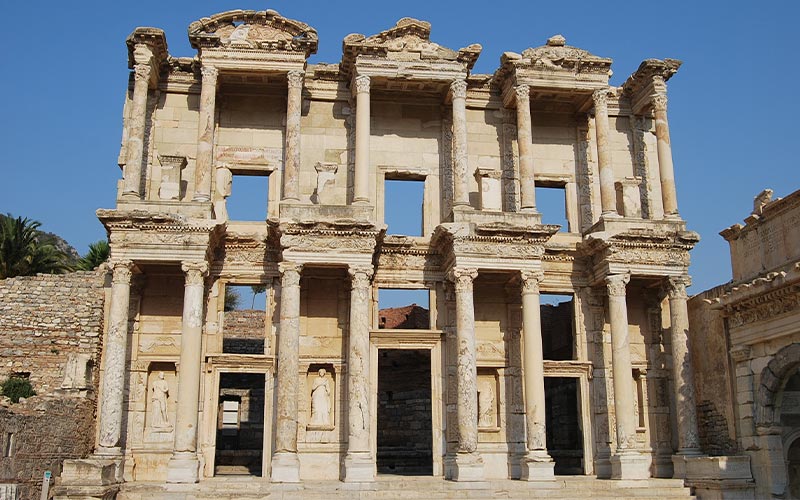
The library of Celsus is one of the most captivating structures of the ruins of Ephesus, with its facade carefully reconstructed from the original pieces and looms large over the city. Initially built in 125 AD in memory of Tiberius Julius Celsus Polemaeanus, an Ancient Greek who served as governor of Roman Asia 105–107 AD in the Roman Empire. In the library, you can also see the Sarcophagus of Celsus.
2. The Amphitheatre
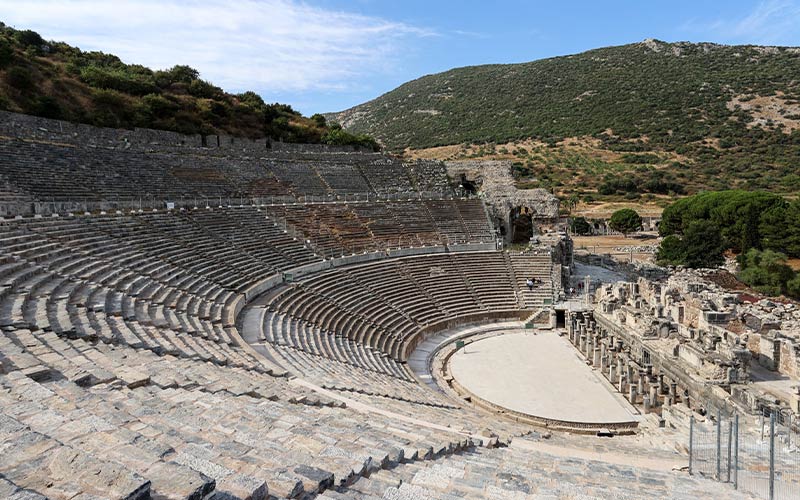
The impressive open-air amphitheatre with a capacity of 25,000 is believed to be the largest in the ancient world. Initially used for dramatic performances and was later used for gladiatorial fights.
3. The Odeon
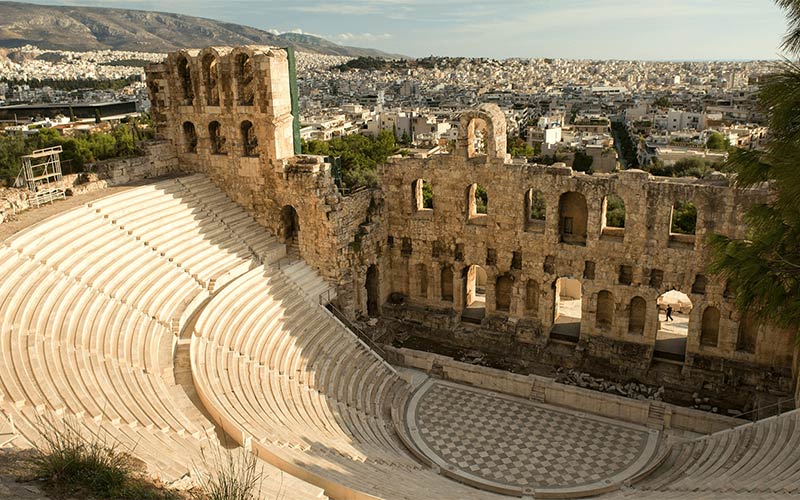
The Odeon, constructed around 150 AD by Publius Vedius Antoninus and his wife, is a small roofed theatre and one of the finest architectural wonders of ancient Athens. The Odeon hosted plays and concerts and had seating for an estimated 1,500 people. The Odean features Corinthian-style pillars made of red granite, and you can still see the steps leading up to the stage.
4. Temple of Hadrian
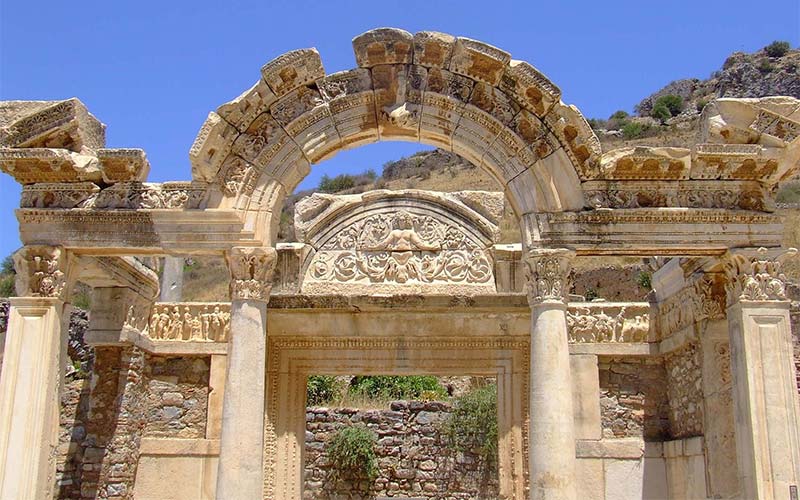
The Temple of Hadrian dates back to the 2nd Century, underwent repairs in the 4th Century and was ultimately recreated from surviving architectural fragments into what we see today. The temple was built in honour of the Roman Emperor Hadrian.
5. The Temple of the Sebastoi
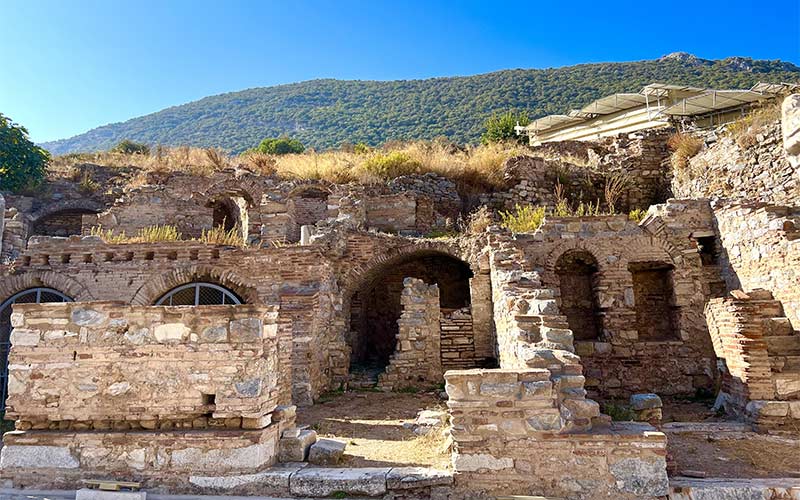
Also called the Temple of Domitian, this temple was dedicated to the Flavian dynasty and was one of the largest in the city. The temple was first dedicated to Domitian but was later re-dedicated to Vespasian, Domitian's father. Today, you can still see the temple's remains in Ephesus, hinting at the grandeur of the structure.
6. Aqueducts
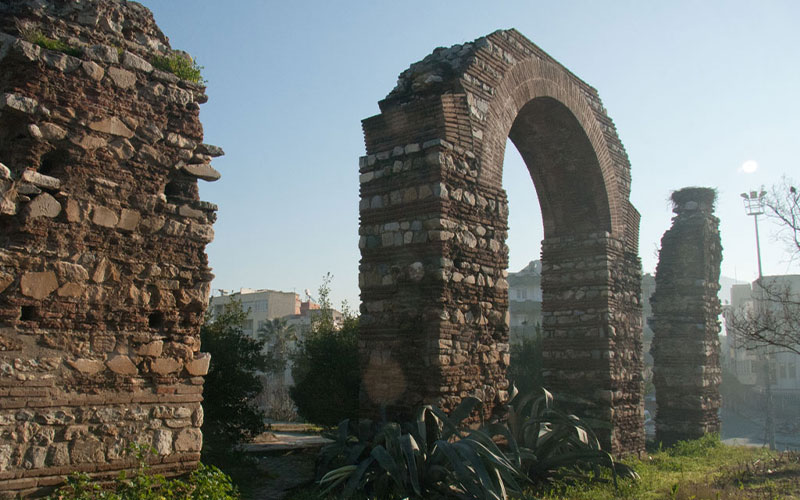
Ephesus had one of the most advanced aqueduct systems in the ancient world. At least six aqueducts of various sizes supplied different city areas, including water mills, a sawmill and many bath complexes.
7. Agoras
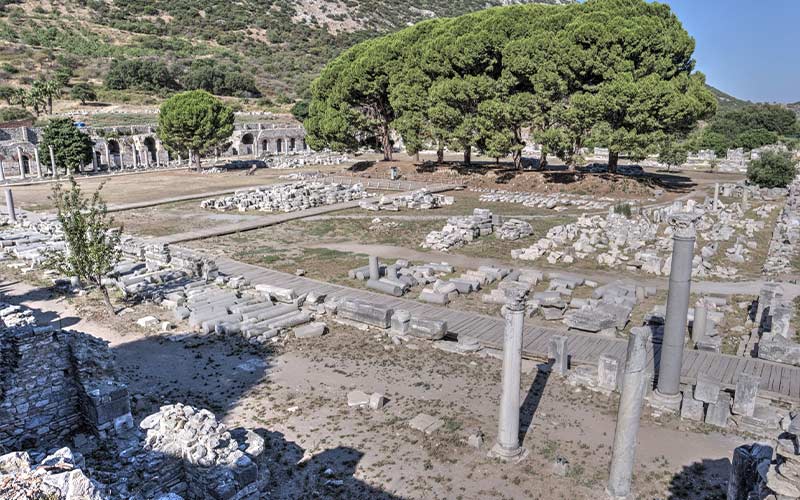
As a wealthy city, Ephesus had many agoras, some for daily wares and others for grander matters of state. You will find many agoras carefully restored and reconstructed throughout the site.
8. Terrace Houses
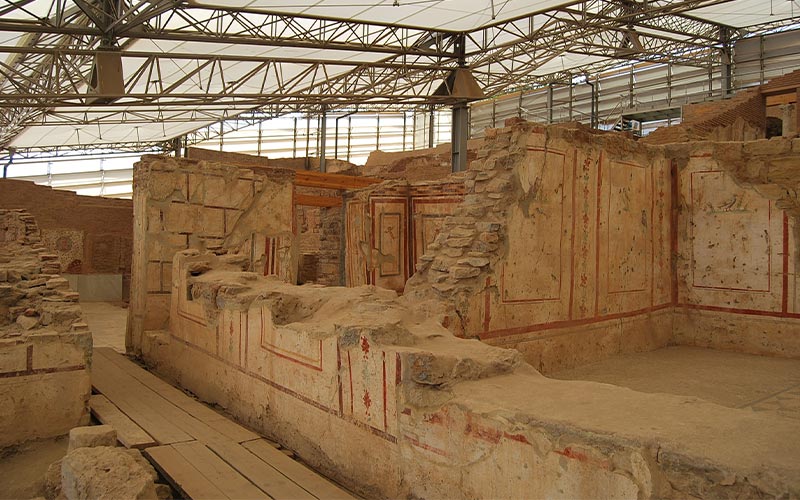
To better understand the lives of Ephesus' wealthy citizens, you can walk on a glass walkway above the Terrace Houses. You can see the layout of old houses that still hold beautiful murals and mosaics on the walls and floors.
9. Curetes Street

Curetes Street is a road that runs through Ephesus and stretches from the Celsus Library to the Heracles Gate. It was the main street of the ancient city and connected the upper part of Ephesus to the lower part of Ephesus. Since the street was the centre of the city, you will see a lot of important buildings along the way. On both sides of the street, you will find column-lined galleries with mosaics with the city's benefactors in front of them.
Other sites to visit around Ephesus
As an ancient ruin, Ephesus provides visitors with all about ancient history. However, other attractions are worth visiting if you want to learn more about history—the House of the Virgin Mary, Ephesus museum and The Temple of Artemis. Moreover, you can see neighbouring locations like Şirince and try delicious silky types of wines.
1. The House of Virgin Mary
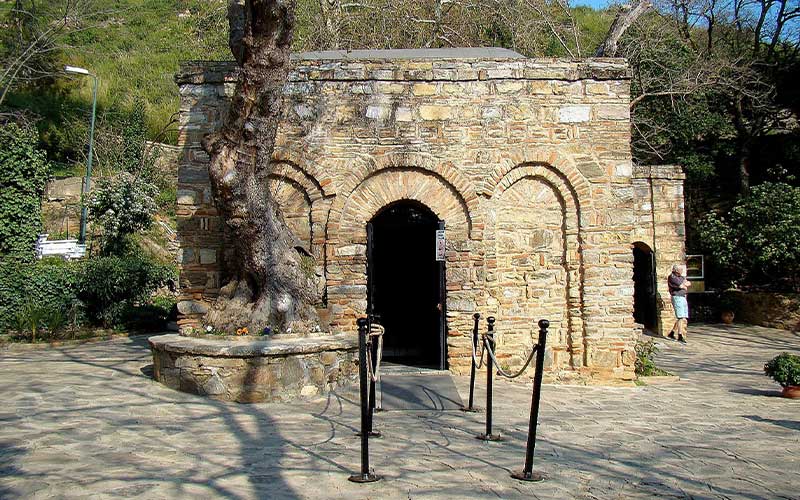
The House of the Virgin Mary is believed to be where the Virgin Mary spent her last days. The house is currently a Christian pilgrimage site that people worldwide visit. You can also make a wish for Virgin Mary on the wishing wall.
2. Artemis Temple
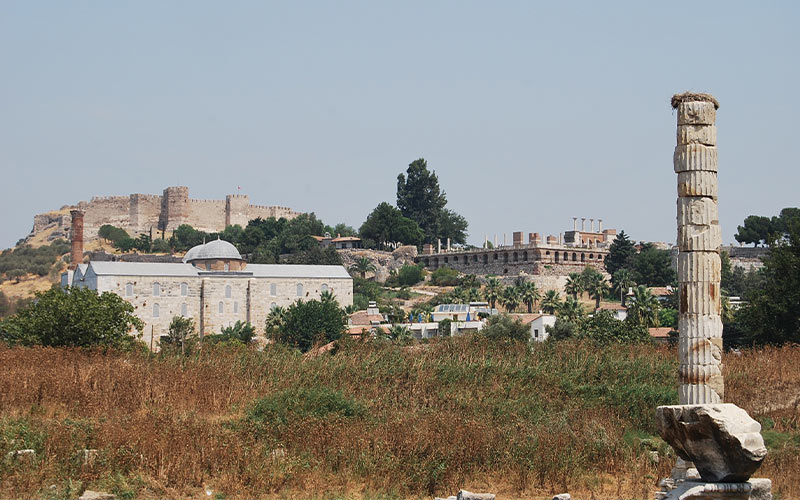
Artemis is the ancient Greek goddess of hunting and wild animals. The goddess was believed to be the protector of the city of Ephesus. Though it's in ruins, this temple used to be a strong structure.
3. Basilica of St. John
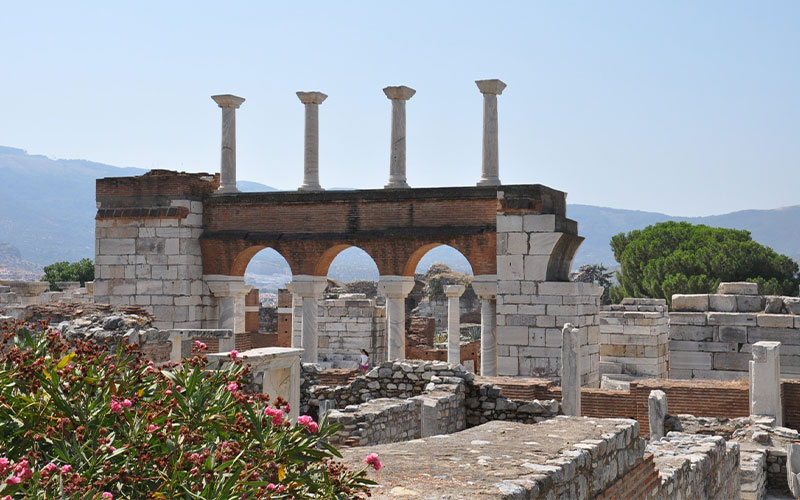
This Basilica was built in the 6th Century AD by Emperor Justinian I. This ancient church is considered constructed over St John's tomb.
4. Ephesus Museum
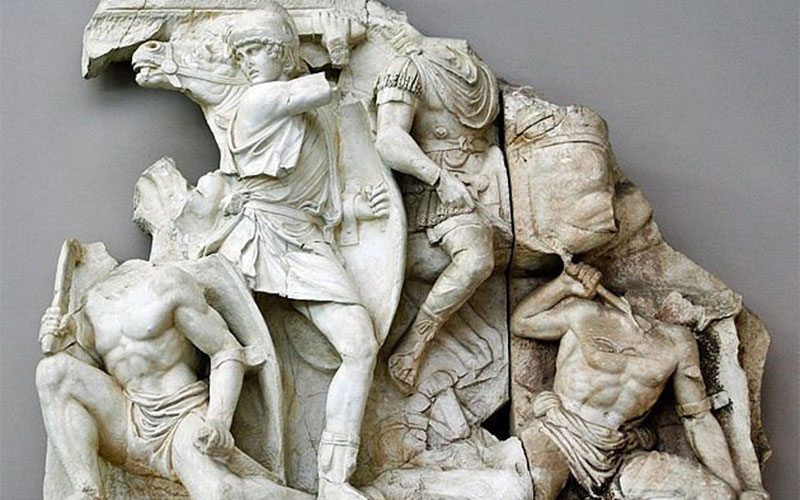
Ephesus Museum introduces some crucial aspects of Ephesian history and a glimpse into its incredible past. The museum displays artefacts, jewellery, household items, medical tools, statues, coins, and friezes. There are also artefacts from the nearby the Temple of Artemis and Basilica of St John displayed in the museum.
5. Sirince
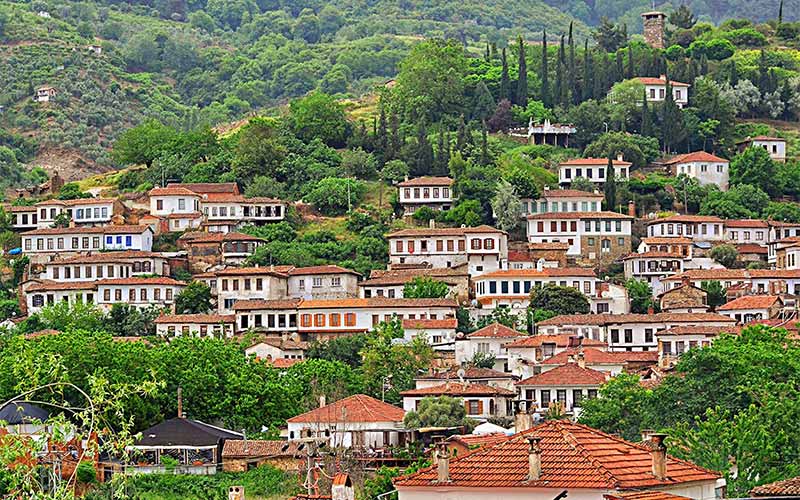
This beautiful village is a tourist hotspot. It also has many photo ops that look like a movie set, and you can check out the historical churches and enjoy the local tastes.
How to go to Ephesus Ancient City?
Ephesus Ancient City is located in the district of Selçuk, in Izmir. If you want to go to Ephesus, you can go by car, bus, or plane. Today, Izmir has bus stations with numerous buses from around Turkey. Also, Izmir has Adnan Menderes International Airport, which is located 60 kilometres away from Ephesus Ancient City in Gaziemir. You can take flights during the day from many locations there.
Best time to visit Ephesus
The best time to visit Ephesus is during the spring or fall. Due to the city's proximity to the Aegean Sea, summer in Ephesus is unbearably hot and humid. But if you are visiting during summer, get there early enough to avoid the harsh sun, as there is little shade to enjoy.
What is the opening time of Ephesus?
Ephesus is open from 08:00 until 18:30 during summer and from 08:30 until 17:30 during winter.
Tips For Visiting Ephesus:
Here is some additional information that may help you in Ephesus, which are:
- You may get tired and hungry after exploring the ancient city. Unfortunately, restaurants and cafes are rare around the old town. But you can easily visit Selçuk and try some famous local dishes.
- While visiting Ephesus, you can have little trips to Şirince Village or other popular touristic destinations like Kuşadası.
- Ephesus is very hot, very dry and has little in the way of shade. To make matters worse, the heat reflects off the white stone, making it almost unbearable sometimes. So make sure you take plenty of water with you.
- Vehicles are not allowed inside the ancient city, so you will have to walk on foot. Keep in mind that some parts are steep and uneven, while others are slippery marble surfaces. So wear your flats and the most comfortable shoes.
- Ephesus is an open-air site, and there is no shelter against rain or heat. So we recommend wearing cool cotton clothing, sun hats, and sunglasses, or you can carry a sun umbrella.
Comment
Leave a Comment